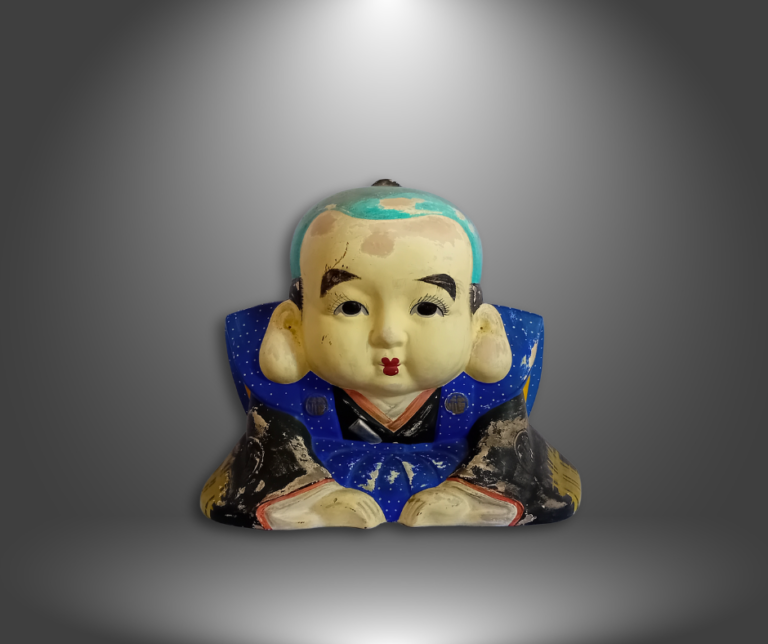This Fukusuke statue, commonly referred to as “Lucky Boy,” is a cherished traditional Japanese figurine that emerged in the 1950s during a period of post-war recovery and optimism. This distinctive statue is characterized by its depiction of a young child, often featuring a unique hairstyle that resembles a topknot and is dressed in traditional Japanese garments that reflect the cultural heritage of the time. Fukusuke statues are typically crafted from various materials, including ceramic and wood, and are painted in vibrant colors to enhance their visual appeal. Beyond their aesthetic qualities, these figurines are imbued with rich symbolism; they are widely believed to attract good fortune, prosperity, and success to homes and businesses alike. As such, they became immensely popular decorative items during the 20th century, commonly displayed on altars or shelves as a charming reminder of the hope for a brighter future. The enduring legacy of the Fukusuke statue continues to resonate, making it a beloved emblem of luck and positive energy in Japanese culture.
Additional Details
Dimensions: Height 29 cm Width 32 cm Depth 20 cm
Material: Ceramic
Year: 1950 to 1959
Origin: Japan
